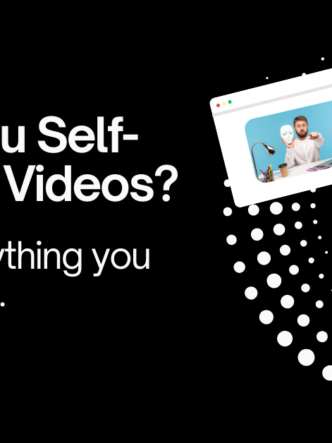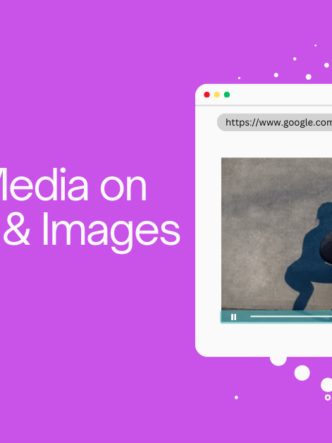Make the Switch to Digital Content: How to Become an E-Publisher
Digital publishing offers higher returns, but making the transition isn’t always straightforward.
Readers expect text content to be digital.
This applies to bookstore fiction as much as it does to educational textbooks, weekly magazines, and newspapers. Readers have been abandoning hardcover and paperback books in favor of e-readers for years.
As a result, the publishing industry is increasingly focusing on digital content over the old print format. Corporations are turning towards digital publishing to train new hires, and advertisers are exploiting new technologies to make the printed word more exciting than ever before.
Publishers who built their brand on distributing printed reading material are transforming their operations to embrace digital content. The market for e-reading materials is surging alongside the market for e-reading devices. Today’s publishers are switching to digital content in order to meet the market’s demands.
Challenges to Becoming a Digital Publisher
Despite the global adoption of e-reading and widespread institutional support, many publishers are hesitant to make the switch entirely to digital publishing.
Publishing leaders and the professionals they work with face multiple challenges on the way to achieving full digital transformation. Some of the challenges that prevent this change from occurring include:
- Regulatory Compliance. Becoming a digital publisher means adhering to digital publishing laws like Europe’s GDPR and the CCPA in California. Building a digital architecture that respects data privacy compliance is a steep challenge for print publishers who have not yet had to confront these issues.
- Paywall Indecision. Some digital publishers establish soft paywalls for subscribers. Others rely entirely on advertising revenue and offer content to users for free. It can be very difficult for print publishers to decide which of these models is the right one to adopt when making the transformation from print to digital.
- Content Aggregation. Aggregators across the Internet are all vying to become the “Netflix of News”. It’s too early to tell which aggregator users trust most, but print publishers who plan on going digital are well-advised to pay close attention to trends in the aggregator space.
- Trust and Transparency. Over the past few years, people have gradually lost trust in many of the institutions that they once relied on. All of print publishing is now called into question, which makes it harder for smaller publishers to successfully transform into digital content creators.
- Viewability Concerns. Viewability is a critical concern for advertisers, who want to know their ads are being served to human users – not bots. Publishers who make the move towards distributing digital content need to put systems in place for addressing these concerns.
- Cookieless Advertising. Third-party tracking cookies have been a mainstay of the digital advertising world for years. Major tech companies like Google and Apple are ending support for this technology, which directly impacts the ability for advertisers to earn money through their partnerships with publishers.
At the same time, age-old challenges such as piracy and competition remain as relevant as ever. Nevertheless, publishers who don’t develop their digital capabilities are likely to be left behind by customers. The need for print publishers to make the switch – and make it carefully – has never been greater.
How to Switch from Print Publishing to Digital Publishing
The process of developing and distributing digital content does not have to be complicated. Print publishers who follow these steps can streamline the process of opening their business to e-readers and digital users around the world.
1. Convert Existing Content into Electronic Format
Making the decision to become a digital publisher does not mean you have to start distributing content from scratch. All of your existing texts and documents can (and should) be available digitally. Reusing content in this way is a low-cost way to monetize existing assets quickly following the digital transition.
If you have the time and expertise necessary, you can go an extra step beyond simply reusing existing content. You can digitally enhance existing content by combining it with new content formats. For example, many authors and publishers successfully release audiobook versions of their bestsellers – sometimes even years after the initial release.
2. Select a Cloud-Hosted E-Publishing Platform to Host Your Content
Reformatting your existing content is just the first step. You still need to be able to distribute content to readers. Choosing the right cloud-hosted e-publishing platform enables you do that.
A high-performance platform designed with publishers’ needs in mind can also help you create new content directly on the platform. There are ebook publishing platforms, news media publishing platforms, and more. Find a platform that caters to your specific content needs and gives you the flexibility to create high-quality content easily.
The best of these platforms will use cloud technology to securely save and backup your assets in a centralized, network-available space. Using a digital asset management platform will enable you to organize your assets and set permissions for the users who can access assets with ease.
3. Automate the Pagination Process
Digital publishing tools make it easy for publishers to instantly paginate content. Designing the layout of an ebook is much easier thanks to the way e-reader software interacts with electronic media.
Print publishers interested in making the leap towards digital publishing should spend some time gaining familiarity with these tools. Create some pre-designed templates you can use to paginate content automatically. This will save you a great deal of time when creating and distributing new work.
4. Choose Between Fixed and Reflowable Layouts
Most ebooks follow one of two layout structures:
- Fixed layouts display the same way on all e-readers. They strictly adhere to the ebooks internal structure, which is ideal for titles that contain lots of images.
- Reflowable layouts offer a seamless reading experience across devices by dynamically changing their layout according to the device itself. This means that text content will display just as well on a large desktop display or a small mobile phone.
Publishers who know what kinds of devices their readers use can adapt their layout choices to meet those users’ needs. Digital publishers collect this kind of data on their customers in order to better optimize content for them.
5. Add Videos, Image, and Audio Files
Print books have a major drawback. They are not interactive and cannot update themselves over time. Digital media solves this problem, enabling publishers to make their content as interactive as they wish.
As a new digital media publisher, one of the best ways to differentiate yourself from the competition is by emphasizing high-resolution images, videos, and audio files in your written content. This improves engagement and lets readers know that your brand is positioning itself as a premium content provider.
These content formats provide value for fiction and non-fiction alike. They are useful for academic textbooks, corporate training courses, and worship materials. Every category of content that you can publish will benefit from an immersive experience.
6. Add Interactive Widgets
Multimedia is not the only thing you can add to your ebooks. On-page interactive features can help drive engagement and generate value for your readers. Some examples include text search, bookmarking, and annotations. Depending on the specific kind of content you publish, these features may make a major difference.
Interactive features also offer an additional benefit to publishers. They allow you to gather useful marketing data on your readers. If you see patterns in the way readers use a particular widget, you may be able to drive more value by creating new content that addresses that pattern.
7. Don’t Forget About Metadata
Metadata is critical to the value digital content offers to readers, advertisers, and publishers alike. Publishers that add metadata to their content make it easy for readers to find specific pieces of content they might be looking for. It makes navigating an entire catalog of ebooks much simpler.
That simplicity doesn’t just help readers – it helps advertisers too. As a publisher, you want advertisers to easily find specific titles in your collections. If they cannot find what they are looking for, they may simply give up on advertising with you entirely.
8. Secure Your Content With DRM Protection
As a digital publisher, you must set a revenue target for the content you develop and distribute. You will have to put systems in place that prevent unauthorized users from copying and distributing that content for free.
Every publisher loses sales to piracy, but deploying the appropriate technology ensures you minimize those losses. Digital rights management (DRM) protection can lock your content behind a protected system that ensures only paying users have access.
9. Publish and Distribute Your Work!
If you have followed all the steps above, you should be ready to publish and distribute ebooks as a digital publisher. You will need to check for ebook distribution options that ensure your content reaches the right audience.
Multiple ebook distribution services cater to print publishers who make the switch to digital publishing. These distributors can help you organize and manage your materials across multiple retail platforms.
Start the Digital Publishing Transformation Now
Switching to digital publishing can be a challenging project. But as the reading market trends towards digital media, more and more readers will look to their phones, tablets, and e-readers before picking up hardcopy content.
Print publishers need to build the appropriate infrastructure to monetize their content through digital channels. Doing this ensures your content remains relevant and profitable well into the future.
Cincopa is a digital asset management solution provider that offers secure, analytics-ready video hosting to publishers. Make the switch from text to digital and host your content on our secure cloud platform.







